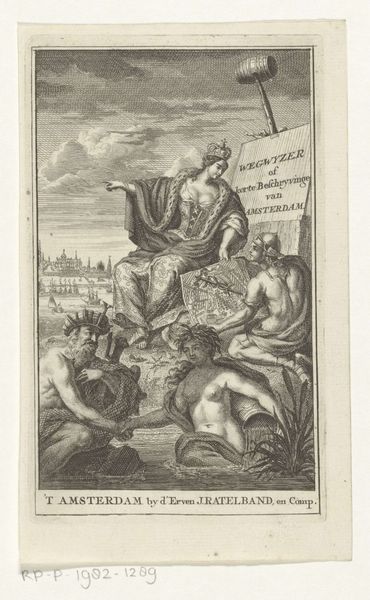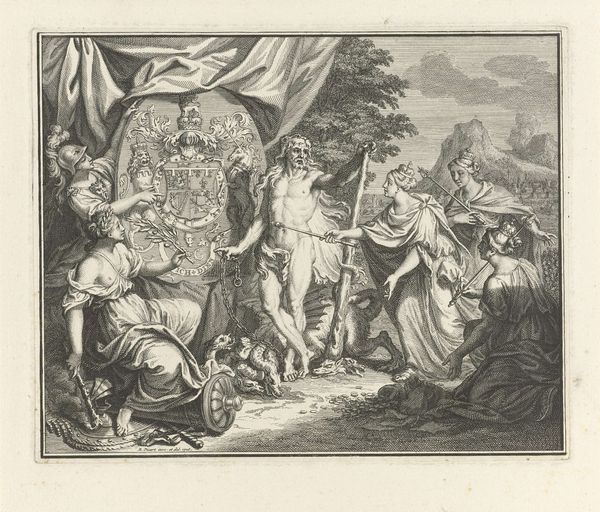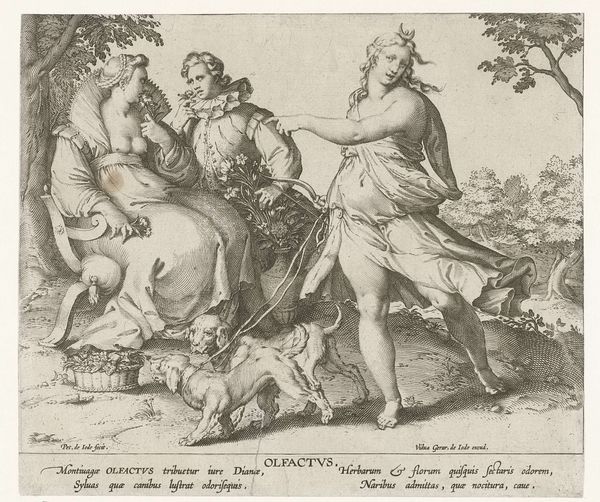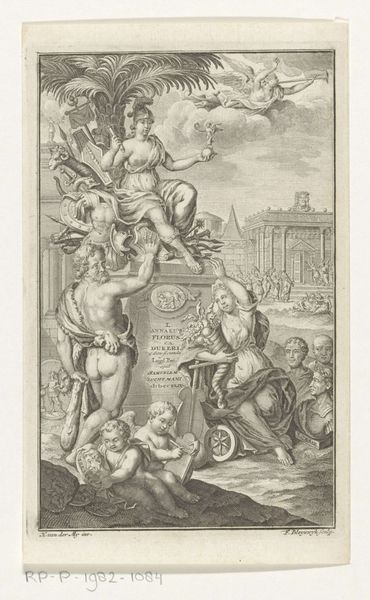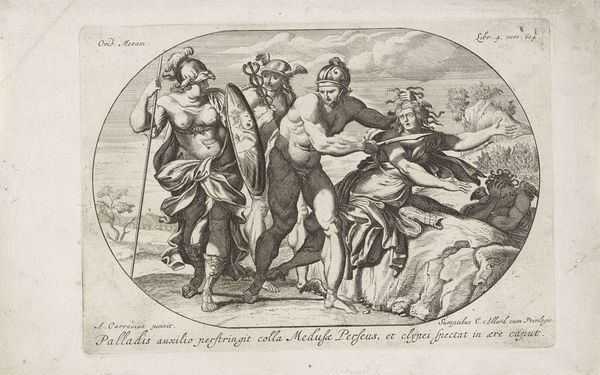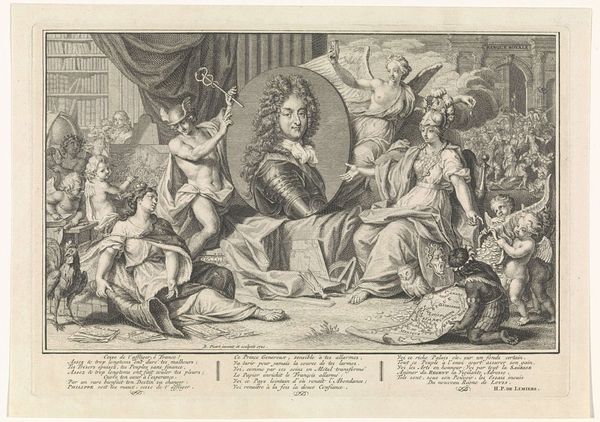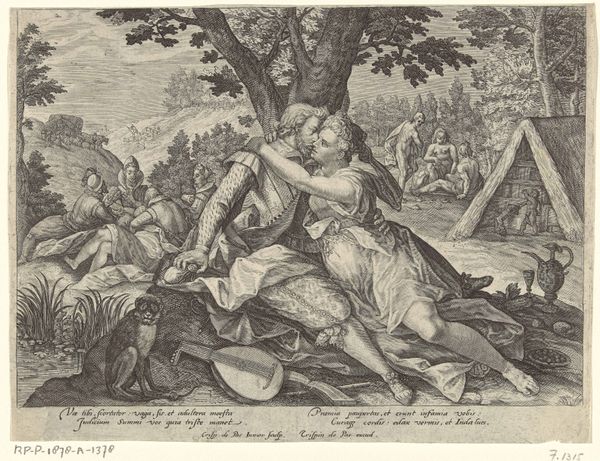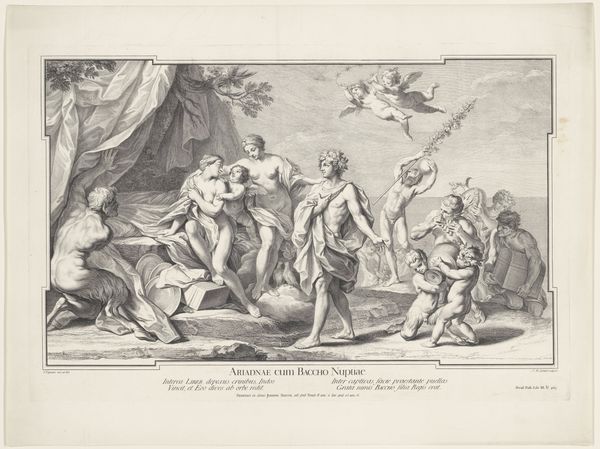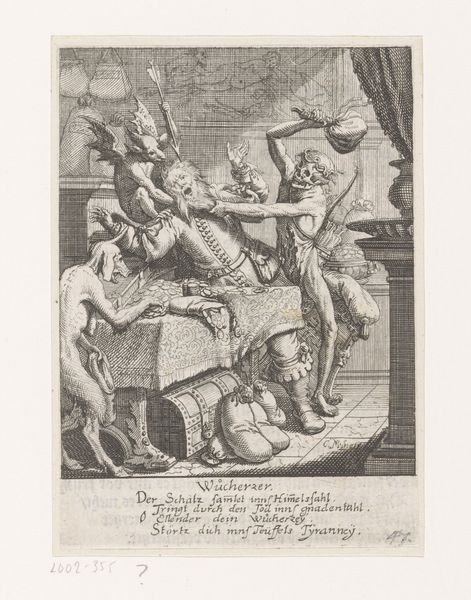
print, engraving
#
allegory
#
baroque
# print
#
figuration
#
engraving
Dimensions: height 186 mm, width 222 mm
Copyright: Rijks Museum: Open Domain
Curator: Pieter de Jode I created this engraving, "Gezicht," sometime between 1590 and 1632. It currently resides here at the Rijksmuseum. What strikes you upon viewing this print? Editor: Immediately, I’m drawn to the tonal range achievable through engraving, it gives real depth despite being on paper. And that light emanating from the top left! The strong diagonals in the composition lead the eye through different characters with incredible effectiveness. Curator: Indeed. De Jode was part of a larger artistic community, a network fueled by the booming printmaking industry in Antwerp. Prints allowed for the rapid dissemination of ideas, influencing taste and transmitting social and political commentary. Editor: Absolutely. If we consider how de Jode arranged forms in this engraving, Jupiter strikes with his scepter an allegorical representation of sight while he is on top of draped cloth and there's a very peculiar chicken in the foreground. The central woman with the basket, together with the male figure that looks like an old wanderer is full of movement while creating a strong contrast with the stationary god figure. Curator: The allegorical figure "Visus" represented with that woman reading a book shows sight's importance through her focus on scripture or perhaps scholarly works. The older man carrying his belongings speaks to everyday experiences shaped by how we perceive the world. Consider also the relationship with other artisans in de Jode's workshop. He relied on skilled laborers for everything from preparing copper plates to distributing finished prints. Editor: The lines that construct the images invite viewers to actively engage in visually completing it. How de Jode layered and contrasted each line gives rise to distinct and subtly shifting tones which produces movement. This makes me think of similar formal relationships in mannerist painting from the time. Curator: By considering the engraving practices, dissemination networks and socioeconomic factors influencing de Jode's practice, we begin understanding that prints weren't autonomous aesthetic objects, but active participants of historical dialogues, informing belief and directing actions. Editor: I concur. By acknowledging this artwork’s composition through allegorical representation and its textural qualities within its historical context of material and means of production we see it not as merely aesthetic artifact, but a confluence of human skill and creative output from a long gone time.
Comments
No comments
Be the first to comment and join the conversation on the ultimate creative platform.

